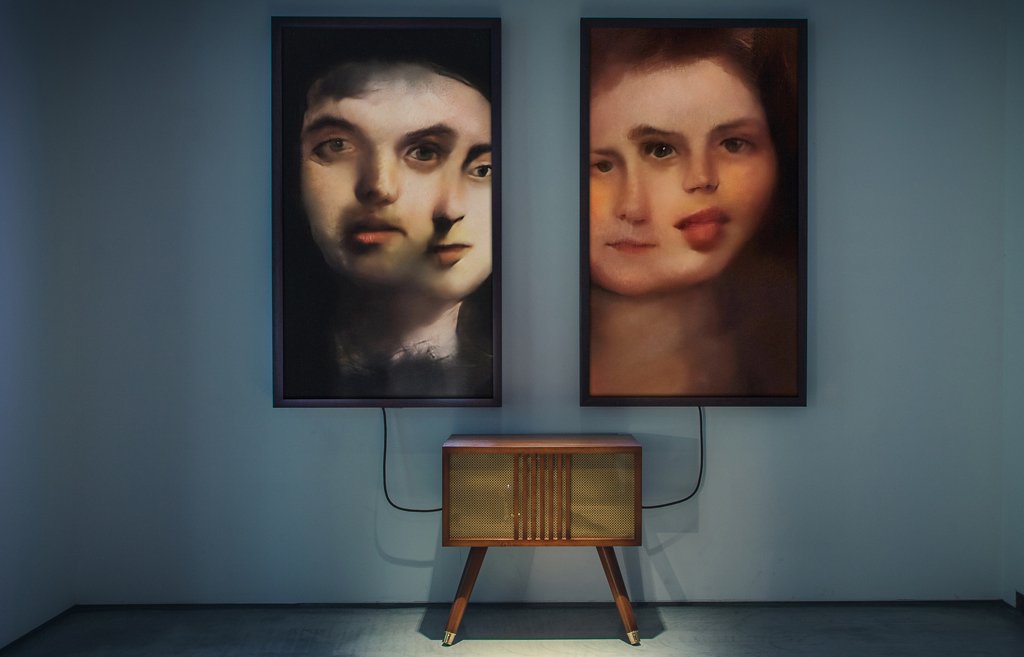Reading time: 4 minutes
Packing is always a nightmare. Whether you’re heading for a full-blown adventure or squeezing your stuff into tiny hand luggage, getting ready for a trip is a challenge in itself. More so for the artist, Mario Klingemann, whose works are showing this summer at three major exhibitions on artificial intelligence. We chat with Mun-Jung Chang, Head of Art Projects at Onkaos, about the logistics of bringing his pioneering artworks to audiences across Europe.
Artwork by Mario Klingemann is featured at Entangled Realities: Living with Artificial Intelligence at HeK, Basel, AI: More than Human at the Barbican, London, and Artificial Intelligence and Cultural Dialogue at The State Hermitage Museum in St. Petersburg. That’s a hectic summer! What are the first steps to ensure that everything travels smoothly?
The German artist, Mario Klingemann works with the very latest technologies, autonomous artificial intelligence machines capable of surprising viewers with their visual output. Transporting these works is a delicate task. The first step is always to establish a solid relationship with the institutions involved because working in partnership is key. With The State Hermitage Museum, for example, we collaborated at every stage, even to identify the best transport company for the job.
Our conservator prepares a condition report of the artwork, then specialists from the transport firm visit to take measurements and agree the most appropriate packaging solutions. For Memories of Passersby I, this was a bespoke wooden crate and cut-to-measure foam. Artworks can travel by air or sea, always with their own “passport” (or ATA Carnet) if they’re heading outside the EU and with nail to nail insurance coverage.
Finally, we ensure that everyone working with the piece has received full instructions on how to install and operate it.
In terms of logistics, are there specific challenges around working with AI art?
All of them! Technologies are progressing at a dizzying pace and artists are incorporating these new developments into their creations. One challenge is to ensure that these pieces are simple to operate and always work correctly on site; in this respect it is essential to provide clear instruction manuals to partner institutions.
Conservation is a hot topic too. Art world professionals have experience and expertise in conserving a whole range of different works but AI art is an emerging field. At ONKAOS we are working together with leading conservators and digital art specialists to find viable solutions for these brand new challenges. It is really exciting to play our part and help shape a common approach to digital art conservation.
Circuit Training, showing at the Barbican in London, is a large-scale interactive piece. Tell us about the technical difficulties of transporting and installing this work.
Circuit Training is technically the most complex installation Mario Klingemann has ever taken on. Essentially, the piece invites the public to participate in the machine learning phase of an AI artwork: exhibition visitors enter a booth where the machine gathers visual information, then pass to a voting station where they grade images created by the AI brain.
From the spotlights programmed to guide visitors into the booth, through to the facial recognition system, real-time data visualisation and audience attention monitoring, the list of challenges this piece entails is endless! The amazing thing is that Mario has translated these technological ingredients into an intuitive experience for visitors.
Has anything gone wrong?
At AI: More than Human, Mario Klingemann’s Circuit Training is located alongside many other cutting-edge examples of AI art. During the test phase before opening, the piece’s data gathering system was picking up images from screens in nearby installations, mistaking digital faces for real visitors. Fortunately, Mario was able to fine-tune his system and programme the cameras in Circuit Training to focus only on visitors physically present in the installation’s booth.
With the backing of Colección SOLO, Onkaos works to support digital artists. How important is it for an artist such as Mario Klingemann to participate in exhibitions like those mentioned here?
Artificial intelligence is big news right now in the contemporary art world and for us, it is an honour and a huge responsibility to support a figure like Mario Klingemann. Exhibitions like those organised across Europe this summer are bringing AI art to much wider audiences and Mario Klingemann is an essential voice in the conversation on this emerging art form. He is keenly followed inside the AI art community, where many fellow artists consider him a genuine pioneer, which makes it especially important to choose carefully where and what to exhibit. The State Hermitage, Barbican and HeK are all world-class institutions and we feel confident that the shows they are currently hosting will put AI art firmly on the map.
Check out the Onkaos VIMEO channel for more about Mario Klingemann’s work, including short films on Uncanny Mirror, Circuit Training and Memories of Passersby I.
Mario Klingemann’s artwork, Memories of Passersby I is on permanent display at Espacio SOLO Madrid. To visit, book a free guided tour here.

